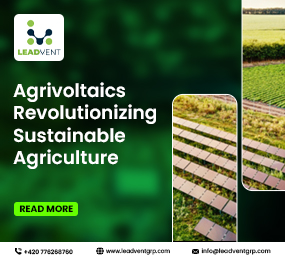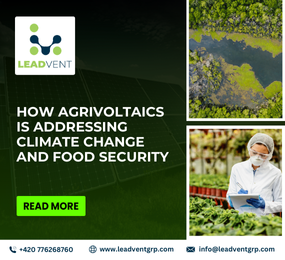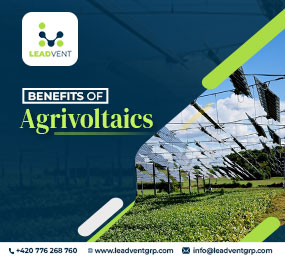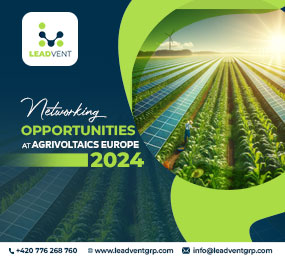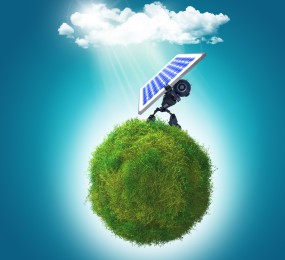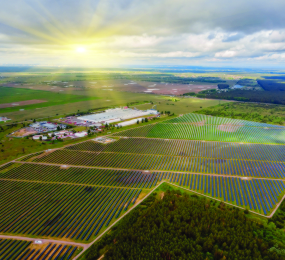After the advent of cutting-edge technology, the versatility of solar power, from powering homes to nurturing crops, is no longer a daydream. This innovative concept is AgriVoltaics, and it enables the farmers to diversify their source of income. The most intriguing aspect of AgriVoltaics is that it allows the strategic usage of the land instead of limiting it merely to farming practices. For the industry professionals and the enthusiasts, participation in the solar energy event appears to be the most lucrative opportunity to explore the ideas of new trends and practices that can lead to a brighter future in the coming time.
The role of smart technology in this transformation cannot be overstated. Advanced tools like artificial intelligence, the Internet of Things, sensors, and drones are revolutionising how we approach farming. AI algorithms analyse vast amounts of data, from weather patterns to soil conditions—allowing farmers to make informed decisions that optimise both crop yields and energy output. Meanwhile, IoT sensors provide real-time monitoring of environmental factors, enabling precise irrigation and resource management that conserve water and reduce waste. Here with this blog of Leadvent Group, let’s explore the ways through which smart technology integration is shaping the future of AgriVoltaics.
The concept of agriculture
Agrivoltaics amalgamates agricultural practices with photovoltaic systems, allowing land to be used for both crop cultivation and solar energy production. This dual-use strategy in reality addresses the challenge of land scarcity while promoting sustainable farming practices. Installation of the solar panels above crops can help farmers derive benefits from reduced heat stress on plants, improved water retention in soil, and protection against extreme weather conditions.
Investments in Agrivoltaics
Investments in agrivoltaics these days are gaining momentum as promising solutions to the twin challenges of food scarcity and climate change. The global agrivoltaics market is projected to grow significantly, with estimates indicating an increase from $3.6 billion in 2021 to $11 billion by 2030. This growth is driven by a compound annual growth rate (CAGR) of approximately 12.15%. Considering this thriving position, investment in agrivoltaics appears to be a profitable option available to investors.
Investment in agrivoltaics also aligns with the environmental goals, and consequently, we are witnessing instances of reduction of greenhouse gas emissions and promotion of biodiversity. The solar energy event, 3rd annual Agrivoltaics Europe, 2024, is going to shed light into the investment opportunities and how the investment can contribute to the preponderance of this innovative approach everywhere across the globe.
Integration of Smart Technologies in Agrivoltaics
Integration of smart technologies in the agricultural sphere is giving rise to a plethora of opportunities. Here the best part is that by deriving the power of solar energy, the farmers are reaping the long-term benefits as their land is getting properly utilised. However, presently the smart tech solutions are adding a new edge to the farming practices and helping to save a great deal of time and money. Let’s have a look at the below pointers to find out how the smart technology integration can be conducted for the best outputs.
Artificial Intelligence
AI-based agricultural technology today is at the forefront of the revolution. Deploying the machine learning algorithms, farmers now have the scope of analysing the vast data sets that include weather patterns, soil conditions, and crop health metrics. This data-driven approach allows for optimised panel placement, ensuring that solar panels are positioned to maximise sunlight exposure while minimising shading on crops. Plus, AI also takes part in coming up with the right prediction of crop yields and energy production.
Internet of Things
After AI, IoT plays an integral role in creating interconnected systems that monitor and control various aspects of agrivoltaics. The usage of the IoT sensors in the present time is collecting real-time data and will keep track of the weather elements like temperature, humidity, soil moisture, and light intensity. Such information in turn leads to the timely adjustments of the nutrient applications and irrigation schedule.
Robotics
When it comes to agriculture, robotics is another transformative element. For instance, tools like SynRobo are taking care of the crops and, at the same time, utilising advanced imaging technology to navigate uneven terrain and execute tasks autonomously.
Case studies
Viticulture Agrivoltaics in France by SunAgri
SunAgri is an eminent French company that has its specialisation in agrivoltaics, and it is currently focusing on a specific project in vineyards. The agrivoltaic setup enhanced the aromatic profile of grapes, increasing anthocyanin levels by 13%. This case study illustrates how the targeted agrivoltaics systems can optimise the crop quality for observation of resources.
BayWa’s Agri-PV Project in the Netherlands
BayWa r.e. has undertaken several pilot projects in the Netherlands focusing on various crops such as wheat, potatoes, and berries. This project is leading to more sustainable farming practices. This project clearly reflects climate resilience while maintaining agricultural productivity.
FAQs
1) What role does AI play in agrivoltaics?
AI takes part in analysing the large datasets to optimise the placement and orientation of solar panels for maximum sunlight exposure. It also predicts crop yields and energy output, allowing farmers to make informed decisions.
2) What are the benefits of integrating smart technologies in agrivoltaics?
Smart technology integration leads to an enhanced degree of agricultural productivity, increased energy efficiency, and improved sustainability.
3) What crops are best suited for agrivoltaic systems?
Usually shade-tolerant crops thrive best under the solar panels.
Final Thoughts
The integration of smart technologies is allowing the Agrivoltaics to unleash their full potential and to turn the agricultural practices into stable sources of income for the farmers. By harnessing AI, IoT, and robotics, both the time and effort of the farmers are going to get saved. To gather more valuable insights on agrivoltaics, join the solar energy event like the 3rd annual Agrivoltaics Europe, 2024. Connect with Leadvent Group today for more details.



